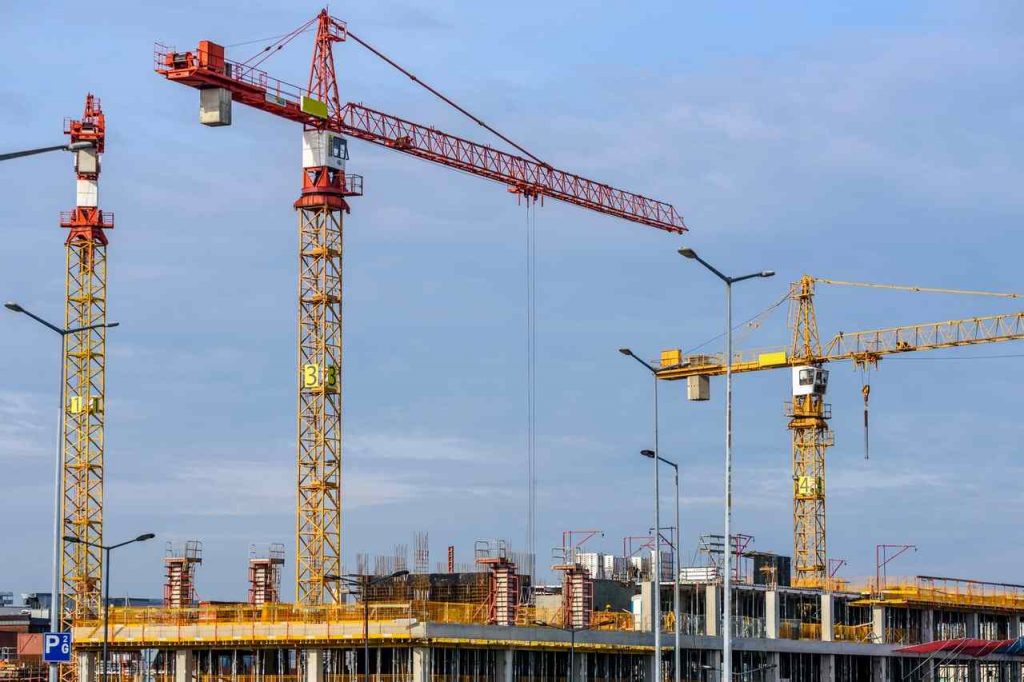
Emerging construction technology is innovative new schemes. There are real, practical applications and benefits to modernizing the current processes involved in the industry.
Construction companies want to stay competitive and not be left behind. Companies are finding various ways to integrate these advances into their strategy and workflows.
These cutting-edge technologies in construction are drastically changing how the industry operates and the way future projects are going to be performed. Below is the list of the recent trends in civil engineering.
Building Information Modelling (BIM)
BIM is similar to CAD (computer-aided design), but not the same. It is software for 3D design to digitally model what is going to be built. The application of BIM increases prefabrication, modularization, and eco-friendliness.
But its capabilities don’t stop there. It doesn’t just create a visually appealing 3D model of the building. It also creates numerous layers of metadata and renders them within a collaborative workflow. It captures things in a way that paper just can’t.
More than 30% of builders are currently using BIM or CAD software. The use of BIM provides space for better collaboration because everyone and expertise area can add their piece to an equivalent model, rather than breaking out onto multiple versions of a 2D paper drawing. One of the highest trending construction technology in 2020.
This way, the model evolves as people contribute, streamlining the process and increasing efficiency. BIM also helps with problem-solving within the design and planning stages of a project, by automating clash detection and providing an entire picture of the project.
Drones or Unmanned Aerial Vehicles (UAVs)
Unmanned Aerial Vehicles (UAVs) – also referred to as “drones” – are set to become increasingly common on construction projects throughout 2020. From undertaking inspections ensuring that operatives are kept out of harm’s way, to surveying vast areas of land in just a few minutes, the continued rise of UAVs will considerably improve safety and productivity in construction.
Drones are the foremost widely used emerging construction technology. They can conduct site surveys more quickly and accurately than a crew on the bottom and are cheaper than aerial imaging. Their high-resolution cameras and therefore the data collected can create interactive 3D or topographical maps and models and take volume measurements.
Another advantage of using drones is that the ability to examine hard to succeed in places like bridges or around tall buildings and to try to do it safely. You can also use them to watch the progress on the employment site and see how people are working.
Many construction sites are already heavily hooked on the utilization of drones. These drones are very beneficial in that they save a lot of time. For instance, surveyors can survey an entire site in just a few minutes, whereas it’d take several weeks or months in the past. This will also save construction companies tons of cash. As drone technology continues rapidly developing in the accuracy and precision of its readings, even less human involvement is going to be necessary.
3D Printing
3D printing as a construction technology has the potential to vary material sourcing. Form prefabrication materials for a Building to printing the whole structure on-site, ready to be used immediately. This can allow companies to get materials faster and streamline the process by removing extra steps in the middle.
According to the report by the American Institute of Architects believes that building-related waste makes up between 25% to 40% of the USA’s solid-waste network. With 3D printing, it will be possible to print materials, as well as the whole structure. on-site, reducing waste, and further saving time and storage costs.
Also Read: Application of 3D Printing in Civil Engineering
Augmented Reality
Augmented Reality is the ability to visualize the real world through a camera lens. It’s something that’s sure to open many new opportunities for the development industry, albeit it’ll accompany a price.
Companies that can afford to start using it now will revolutionize how they project and build things. This is a trend which will grow much bigger within the next few years.
One of the simplest emerging trends in engineering. Many people believe that instead of safety goggles, they’ll start planning and plotting sites before they even began excavation. Augmented Reality will play a huge role in construction. VR is one of the simplest trending construction technology in 2020
Artificial Intelligence and Machine Learning
Implementation of AI on the worksite with the utilization of robotics for tasks like bricklaying and autonomous equipment will operate and complete tasks without the necessity for human interaction—one of the simplest emerging trends in engineering.
AI and ML can benefit construction projects through increased safety, improving workflows, and getting jobs done faster and better. It also can identify when information or pieces are missing, and use the info it collects. Smartvid.io, as an example, aggregates visual data from the worksite and intelligently analyzes it for various purposes, including safety, quality, progress tracking, and marketing.
Exoskeletons
Exoskeletons are wearable devices that work in sync with the user. Exoskeletons are placed on the user’s body and act as enhancers that augment, reinforce, or reconstruct human performance.
Initially developed for military use and patient mobility and rehabilitation, exoskeletons are now beginning to appear on construction sites.
Helping to protect workers from manual handling injuries and the risk of hand-arm vibration, these mechanical suits that “augment” with human operatives delivers considerable gains in productivity.
Already being rapidly adopted across manufacturing, live trials on construction sites in the past year have generated results that look set to drive the development and uptake of exoskeletons in the construction sector in upcoming years.
Advanced Materials
With growing awareness of the impact that construction has on our surroundings, technological advances are bringing numerous new material innovations to the fore. The recycling of hard-to-dispose-of waste products has seen a big increase, particularly in reference to plastics. During recent years we have seen the incorporation of waste plastic into roadways and even its use as a cloth for 3D printing new building components or structures.
CO2 is another by-product being re-purposed to reduce the carbon footprint of the industry. At this project in Atlanta, CO2 was injected into the concrete mix utilized in the building’s structure. This CO2 becomes trapped inside the concrete because it cures while chemical reactions within the combination form limestone nanoparticles, increasing the general compressive strength of the ultimate material.
Staying with one of the construction’s most popular materials, “self-healing concrete” is mixed with calcite-precipitating bacteria. These bacteria develop when water enters the cracks in deteriorating concrete, filling the emerging air gaps.
Other areas to watch include the continued rise of “kinetic paving” that harvests energy from the footsteps of pedestrians to generate electricity, “4D-printed structures” that have the ability to re-shape over time in differing conditions and “smog-eating buildings” coated in photocatalytic titanium dioxide that reacts with light to neutralize pollutants in the air of some of the world’s most congested cities.
Also Read: 5 Innovative Building Materials in civil engineering
Self Healing Concrete
Many industry experts believe we’ll start seeing self-healing concrete being used on roads, buildings, and homes. Since concrete is the most widely produced and consumed material in the construction industry, many believe that by 2030 we’ll be using about 5 billion metric tons per year. Part of this is often thanks to the urban boom that’s being experienced in China and India today. Currently, the United States makes up 8% of the total global emissions in this area – a number that’s also slated to rise.
Advance Uses Of GPS
Construction World says that while GPS tracking solutions aren’t new, they’re now being used in more creative and resourceful ways including:
Surveying has been dramatically improved because crews no longer need to use traditional surveying equipment. Data for prospective project sites are often quickly and accurately collected.
Project managers also are using GPS in fleet management. Today, each of their vehicles is equipped with a device that is trackable via both computers and smartphones. This lets everyone know where vehicles always are
Smart Building and Connected Homes
Smarter buildings equate to better lighting control, better energy efficiency, and proper air-conditioning control. Just Like computer servers connected in a network to form the internet, solar-powered homes will build an interconnected cell-powered system, thus generating and managing power and energy more efficiently.
If you have a website, you most likely have analytics set up to measure and monitor traffic and user behaviour on your site. Soon, we will start to see more applications of analytics in residential and commercial buildings. This way, we will get real-time insights into the amount of traffic and behaviour of visitors, allowing the smart building to make adjustments to its features.
That could include turning off lights where there are no people, adjusting temperatures, closing shutters for the facades facing the sun, or opening lanes for the car park exits instead of just one when everyone is leaving the office for home. One of the simplest emerging trends in engineering
Also Read:

